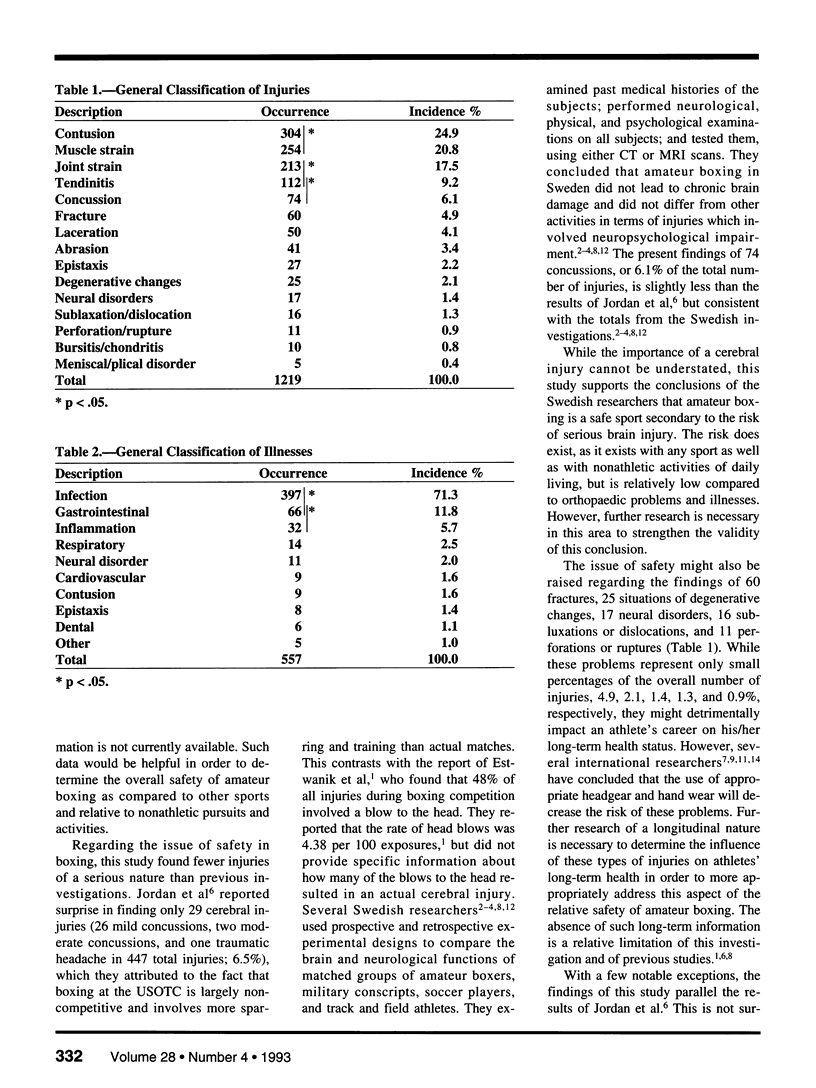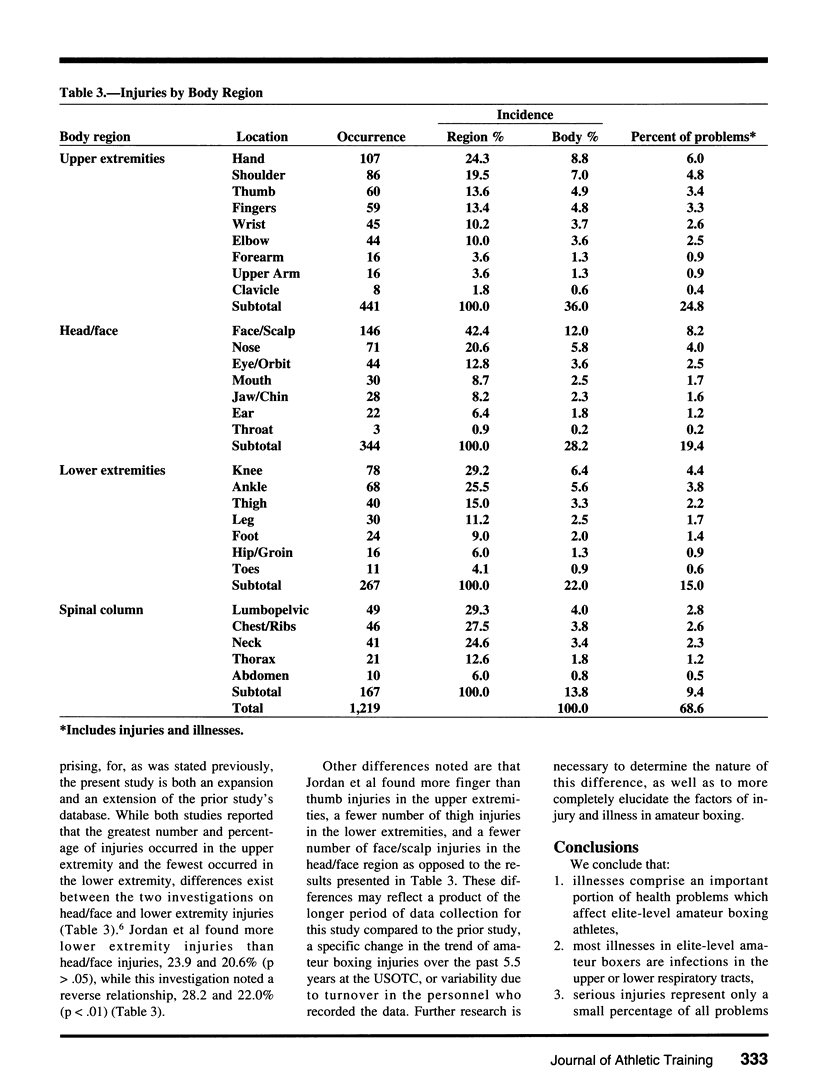Abstract
We examined the incidence of health problems in elite-level amateur boxing athletes who sparred, trained, or competed at the United States Olympic Training Center in Colorado Springs, Colorado from January 1, 1977 through June 30, 1992. We think this is the first study to examine both injuries and illnesses in a population of elite-level athletes. We collected data on 1,776 reported problems (1219 injuries, 557 illnesses) from standard medical report forms completed by the permanent and volunteer sports medicine staff. We classified the information based on type, body region, location, description, and occurrence. There were significant differences between the frequency of injuries and illnesses and between the classifications and regions for each type of problem. Collectively, serious injuries represented only a relatively small percentage (6.1%) of all problems. We concluded that illnesses comprised a small but important portion of problems, that most illnesses involved respiratory tract infections (71%), that there is only a small risk for serious injury, and that injuries occur in a hierarchy of upper extremity (441, 25%), head/face (344, 19%), lower extremity (267, 15%), and spinal column (167, 9%) for amateur boxers.
Full text
PDF




Selected References
These references are in PubMed. This may not be the complete list of references from this article.
- Haglund Y., Bergstrand G. Does Swedish amateur boxing lead to chronic brain damage? 2. A retrospective study with CT and MRI. Acta Neurol Scand. 1990 Nov;82(5):297–302. doi: 10.1111/j.1600-0404.1990.tb03307.x. [DOI] [PubMed] [Google Scholar]
- Haglund Y., Edman G., Murelius O., Oreland L., Sachs C. Does Swedish amateur boxing lead to chronic brain damage? 1. A retrospective medical, neurological and personality trait study. Acta Neurol Scand. 1990 Oct;82(4):245–252. doi: 10.1111/j.1600-0404.1990.tb01614.x. [DOI] [PubMed] [Google Scholar]
- Haglund Y., Persson H. E. Does Swedish amateur boxing lead to chronic brain damage? 3. A retrospective clinical neurophysiological study. Acta Neurol Scand. 1990 Dec;82(6):353–360. doi: 10.1111/j.1600-0404.1990.tb03316.x. [DOI] [PubMed] [Google Scholar]
- Kornev M. A. Vliianie zaniatii nekotorymi vidami sporta na skelet kisti podrostkov i iunoshei. Arkh Anat Gistol Embriol. 1980 Feb;78(2):5–9. [PubMed] [Google Scholar]
- Murelius O., Haglund Y. Does Swedish amateur boxing lead to chronic brain damage? 4. A retrospective neuropsychological study. Acta Neurol Scand. 1991 Jan;83(1):9–13. doi: 10.1111/j.1600-0404.1991.tb03952.x. [DOI] [PubMed] [Google Scholar]
- Schmidt-Olsen S., Jensen S. K., Mortensen V. Amateur boxing in Denmark. The effect of some preventive measures. Am J Sports Med. 1990 Jan-Feb;18(1):98–100. doi: 10.1177/036354659001800117. [DOI] [PubMed] [Google Scholar]
- Sim E. Die Daumensattelgelenkverrenkung als seltene Sportverletzung. Sportverletz Sportschaden. 1990 Jun;4(2):92–95. doi: 10.1055/s-2007-993605. [DOI] [PubMed] [Google Scholar]
- Thomassen A., Juul-Jensen P., de Fine Olivarius B., Braemer J., Christensen A. L. Neurological, electroencephalographic and neuropsychological examination of 53 former amateur boxers. Acta Neurol Scand. 1979 Dec;60(6):352–362. doi: 10.1111/j.1600-0404.1979.tb07661.x. [DOI] [PubMed] [Google Scholar]


